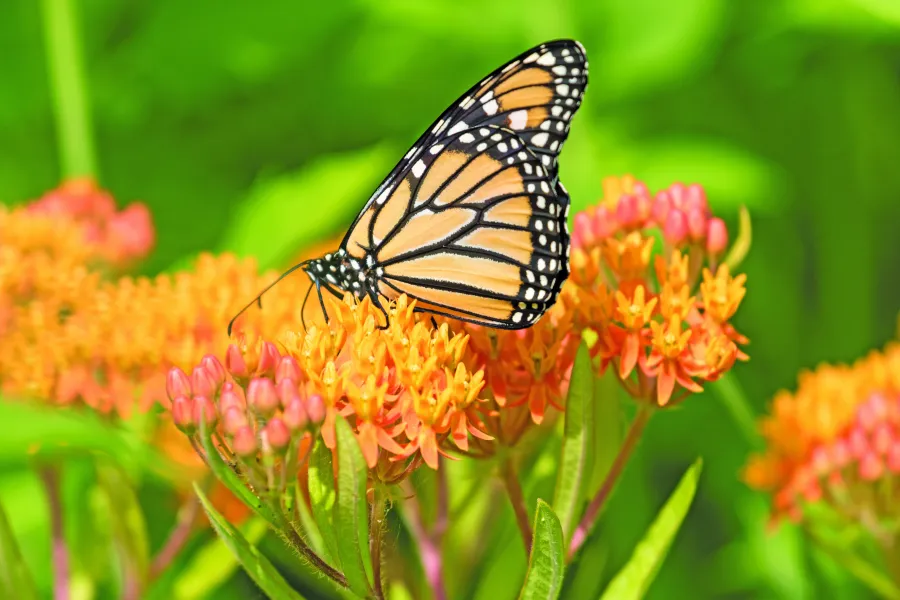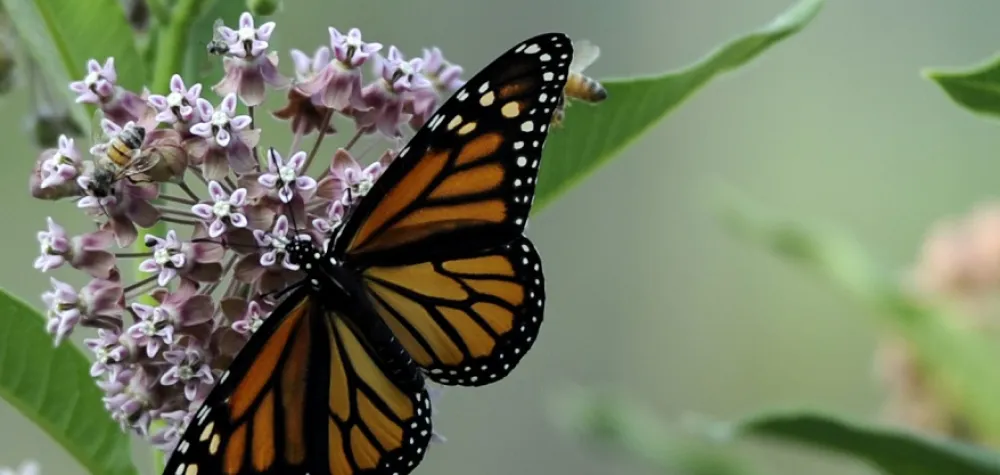
Growing Milkweed
Tropical vs. Native Milkweed
Asclepias, commonly called milkweed, provides food and protection to the beloved Western monarch butterfly with their bright orange wings rimmed with black and accented with white dots. When the monarch eggs hatch into larvae (caterpillars) they only eat milkweed until they transform into an adult butterfly. Milkweed is a vital part of the Monarch population and thus the food chain. Monarchs migrate in winter for two reasons: to find relocate to an area that will not freeze and to find food. There has been a lot of conversation about tropical milkweed versus native milkweed.


Native Milkweed
Asclepias
fascicularis
This
narrow-leafed milkweed is native to California with clusters of lavender
flowers in summer. It goes dormant in winter encouraging the Western monarch
butterfly to migrate for the winter. It's a great choice for those wanting to
attract Monarchs; though it can be hard to find. It is more readily available to grow from seed.
Tropical Milkweed
Asclepias
curassavica
Known
for its showy red, orange and yellow flowers in summer. There are concerns that
this milkweed discourages the Western monarch butterfly to follow its natural
migration from October to late March and is thus harming the butterfly
population. Some monarchs will stay in California since it won't freeze and
food is available. The best horticultural practice is to cut back tropical milkweed from October to January to help the plant "hibernate" for winter and encourage
monarch migration. Come spring, it will burst forth with fresh green growth and
blossoms, just in time for the returning monarchs.





